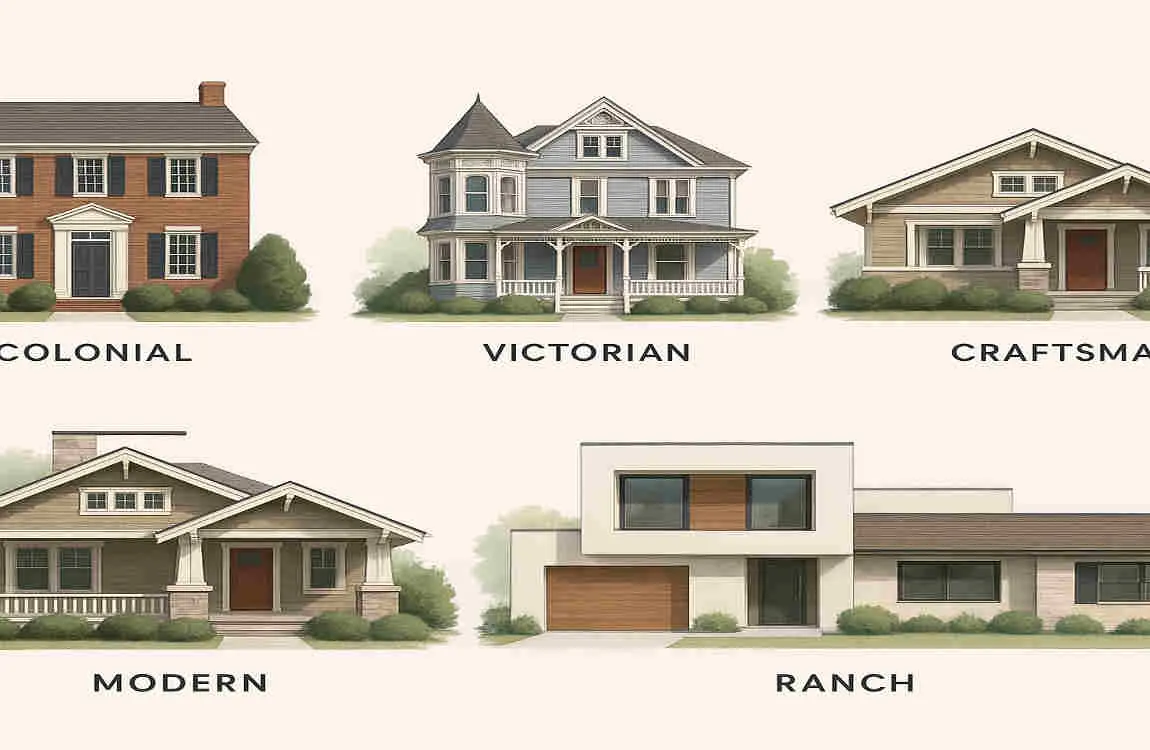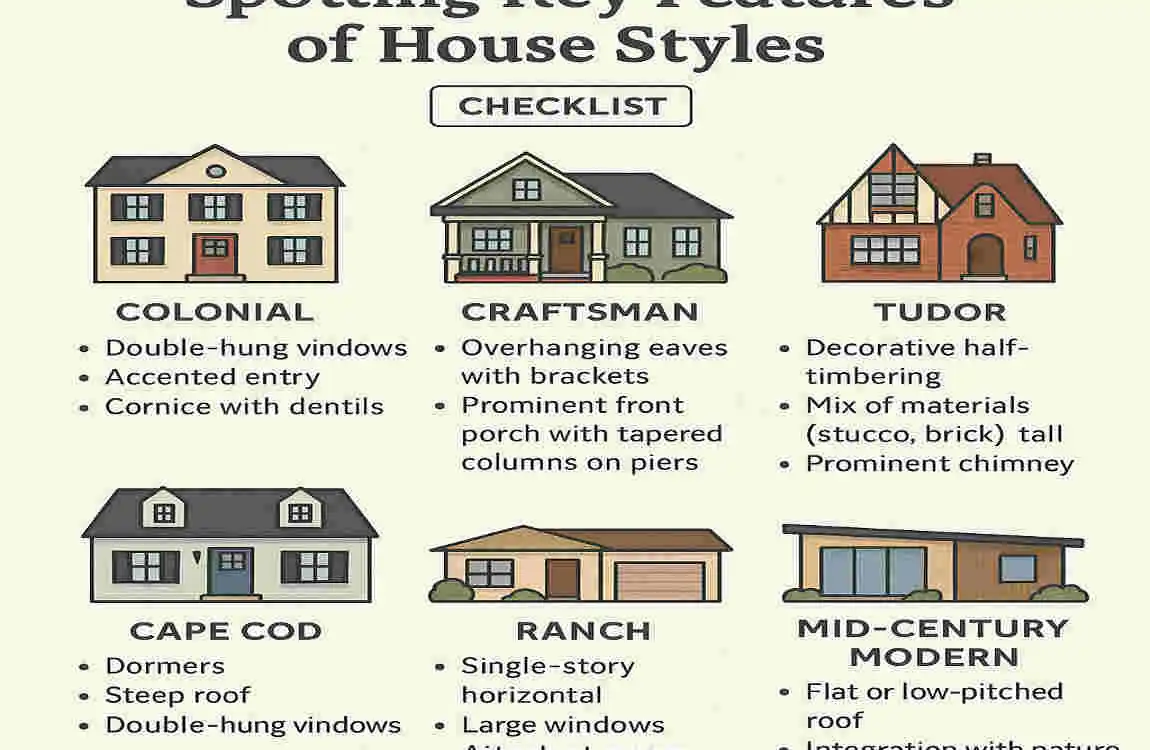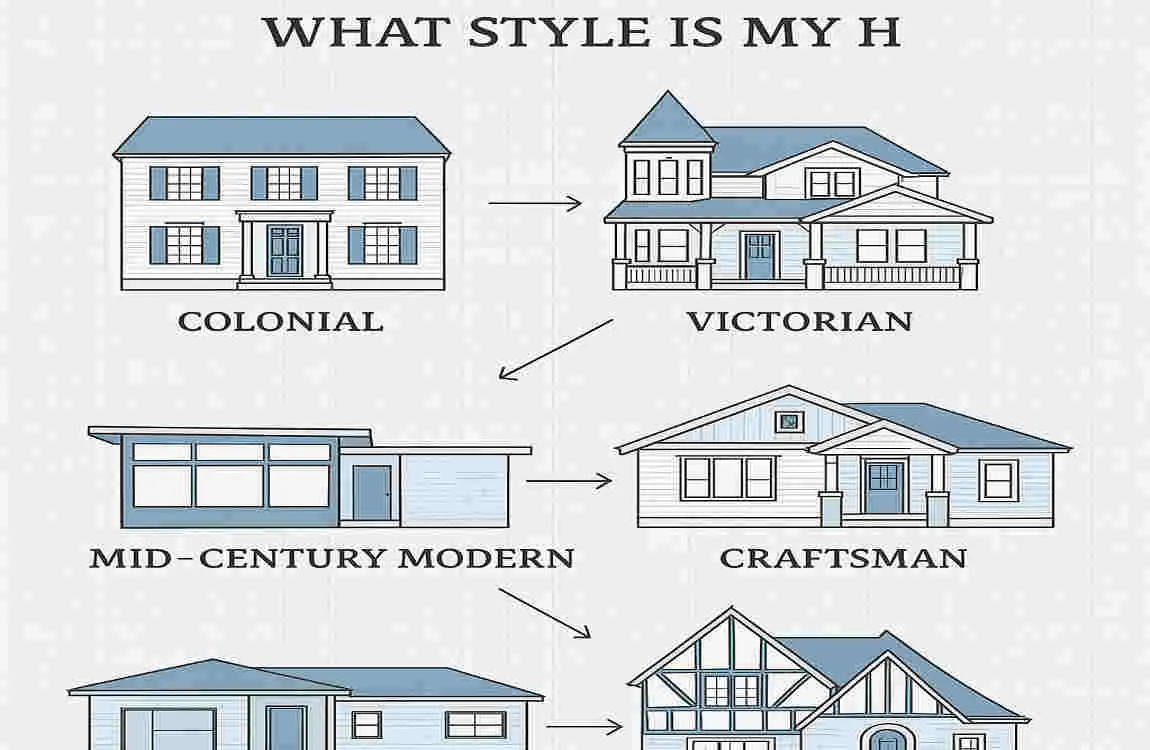When we think about our homes, the style often shapes our first impressions. It’s not just about aesthetics; the style of your home can significantly influence how you feel in your space and how others perceive it. Whether you’re considering a remodel, preparing for resale, or simply looking to refresh your decor, understanding your home’s style is essential.
What Is House Style? Understanding the Basics

Defining House Style
House style refers to the distinctive characteristics of a home, encompassing both architectural and decorative elements. It’s a combination of features that makes a house unique, from its overall shape to its interior design.
Architectural Style vs. Décor Style
While the architectural style relates to the structure and design of the building itself, the decor style focuses on the aesthetic choices made within the space. For instance, a home might be designed in a Modern architectural style but feature Bohemian décor elements. Understanding the difference helps clarify your home’s identity.
Influencing Factors
Various factors influence house style, including historical, cultural, and regional elements. For example, homes in coastal areas often reflect a beachy aesthetic, while homes in urban settings may lean towards modern and minimalist styles. Recognising these influences helps identify and appreciate your home’s unique style.
The Benefits of Identifying Your Home’s Style

Understanding your home’s style offers several benefits:
- Easier Decorating and Remodelling Decisions: When you know your style, choosing paint colours, furniture, and décor becomes simpler.
- Increased Resale Value: A cohesive style can greatly appeal to potential buyers, making your home more marketable.
- Confidence in Design Choices: Knowing your style inspires confidence, enabling you to make bold design choices without second-guessing.
- Enhanced Curb Appeal: A well-defined style can improve your home’s exterior, boosting its curb appeal and your personal satisfaction.
Quick Visual Checklist: Spotting Key Features of House Styles

To help you start thinking about “what style is my house?”, here’s a quick visual checklist. Examine the following elements:
Element: What to Look For
Roofline Shape (gabled, flat, hipped)
Windows Style (double-hung, casement, bay)
Door Type (arched, panel, sliding)
Exterior Finishes Material (brick, wood, stucco)
Floor Plan Open vs. Compartmentalised Layout
Use this checklist as a guide to start identifying your home’s style!
Major Home Styles Explained

Let’s dive into some of the significant home styles that you might encounter. This section will provide a detailed look at each style’s defining features and characteristics.
Colonial Style
Colonial homes are known for their symmetry and formal design. They often feature:
- Columns and porches
- Double-hung windows
- A central front door
Variants
- Georgian: Characterised by its symmetry and classic details.
- Federal: Features more decorative elements and intricate mouldings.
- Cape Cod: A more straightforward style, typically one or one-and-a-half stories, with steep roofs.
Regional Popularity
Colonial homes are prevalent in the Northeast of the United States, reflecting the country’s early architectural influences.
Victorian Style
Victorian homes are celebrated for their ornate details and complex designs. Key features include:
- Ornate trim and mouldings
- Towers or turrets
- Vibrant colours and intricate patterns
The Victorian style is a blend of various influences, including Gothic, Italianate, and Queen Anne styles.
Craftsman/Bungalow
Craftsman homes highlight craftsmanship and natural materials. They often feature:
- Low-pitched roofs
- Exposed rafters
- Front porches with thick square columns
This style emerged from the Arts & Crafts movement, emphasising simplicity and craftsmanship.
Modern and Mid-Century Modern
Modern homes are known for their clean lines and minimalist design. Notable features include:
- Flat or shed roofs
- Large glass panels
- An emphasis on open floor plans
Mid-century modern homes focus on connecting indoor and outdoor spaces, often incorporating nature into the design.
Ranch and Split-Level
Ranch homes were popular in postwar America and are characterised by:
- One-story layouts
- Integrated garages
- Sliding glass doors
Split-level homes feature multiple levels, allowing for distinct areas within the same footprint.
Mediterranean and Spanish
These homes often exude a warm and inviting aesthetic. Look for:
- Stucco exteriors
- Red tile roofs
- Arched entryways
Mediterranean homes typically include courtyards and ornamental ironwork, creating a seamless indoor-outdoor flow.
Contemporary and Minimalist
Contemporary homes focus on simplified forms and neutral colours. Key elements include:
- A focus on light and space
- Use of natural materials
- Clean, unembellished designs
Other Notable Styles
- Tudor: Characterised by steeply pitched gable roofs and decorative half-timbering.
- Cottage: Known for their cosy and quaint appearance, often featuring flower gardens.
- Farmhouse: Traditionally large homes with wide porches and functional layouts.
- Prairie: Emphasises horizontal lines and integration with the landscape.
Step-By-Step Guide: How To Determine “What Style Is My House”

Identifying your home’s style can be an enjoyable and rewarding process. Here’s a step-by-step guide to help you:
Start Outside: Exterior Features
Begin with the exterior features of your home. Pay attention to the shape of the roof, siding materials, windows, and doors.
Step Inside: Floor Plan and Layout
Next, assess the floor plan. Is it open and airy, or more compartmentalised? The arrangement of rooms can offer significant clues.
Unique Details
Look for unique details inside your home, such as trim, mouldings, fireplaces, and built-in furniture. These elements can reveal your home’s style.
Compare With Reference Photos
Use online databases and style guides to compare your home with reference photos. This can help you visualise and identify similarities.
Check the History
Understanding the history behind your home can provide context. Research its age, location, and builder records to uncover clues about its architectural style.
Ask the Experts
If you’re still unsure, consider consulting an architect, historic consultant, or realtor. Their expertise can provide valuable insights into your home’s style.
Interactive Tools and Resources

Today, several online quizzes and tools can help you determine your home’s style. Look for quizzes titled “What style is my house?”—they usually ask questions about your home’s features and preferences.
Recommended Resources:
- Books: Look for titles on architectural styles and home design.
- Visual Guides: Seek out illustrated guides that compare various styles.
- Apps and Websites: Platforms like Houzz and Pinterest offer crowdsourced style identification and inspiration.
Adapting and Personalising Your Home’s Style

Once you understand your home’s style, you might want to make it your own. Here are some tips on how to do this:
Respecting Original Style
When making changes, always respect your home’s original style. This ensures that any updates enhance rather than detract from its character.
Mixing and Matching Styles
Don’t hesitate to mix and match styles, but do so tastefully. Consider how different elements can complement one another while maintaining cohesion.
Choosing Décor
Select furniture, colour palettes, and décor that fit your home’s style. For example, if you have a Craftsman home, opt for natural materials and earthy colours to enhance its character.
Case Studies/Real-Life Examples

affect home value?
A well-defined styl
Here are three inspiring before-and-after stories of homeowners who discovered and embraced their home’s true style:
The Colonial Revival
A couple purchased a Colonial home that had been updated with modern fixtures. By restoring original features like the fireplace and crown moulding, they highlighted the home’s character while blending in contemporary elements.
The Craftsman Transformation
A homeowner found a neglected Craftsman bungalow. By focusing on restoring the front porch and utilising natural materials, they stayed true to the style and elevated their home’s charm.
The Modern Makeover
Another homeowner had a traditional house but desired a modern aesthetic. By introducing minimalist décor and large glass panels, they created a seamless connection with their outdoor space while maintaining structural integrity.
What Style is my House FAQ
Why Is It Important to Know My House’s Style?
Understanding your home’s architectural style can help you:
- Choose decor and renovations that complement its design.
- Increase its market value by highlighting its unique features.
- Appreciate its historical or cultural significance.
How Can I Identify My House’s Style?
Here are some steps to help you figure it out:
- Look at Key Features
Pay attention to details like roof shape, window styles, siding materials, and decorative elements. For example:- Victorian homes often have intricate trim, steep roofs, and asymmetrical designs.
- Modern homes feature clean lines, open floor plans, and minimal ornamentation.
- Research the Era of Construction
The time period when your house was built can provide clues:- A home built in the 1960s might be a mid-century modern with open layouts and large windows .
- A 1910 home could be a Tudor with steep gables and decorative half-timbering.
- Examine Specific Details
Features like fireplace surrounds, trim, and hardware can reveal a lot. For instance:- Craftsman homes often have exposed beams and built-in cabinetry.
- Italianate homes may have arched windows and symmetrical facades.
- Use Online Tools or Visual Guides
There are quizzes and infographics available online to help narrow down your home’s style. For example, some guides focus on distinguishing between popular styles like Tudor, Victorian, and Craftsman,.
What Are Some Common Architectural Styles?
Here’s a quick overview of popular styles:
- Victorian: Ornate trim, steep roofs, asymmetry.
- Tudor: Decorative half-timbering, steep gables.
- Craftsman: Exposed beams, earthy tones, built-ins.
- Modern: Clean lines, open layouts, minimal decor,.
- Ranch: Single-story, open floor plans, simple design.
Can I Mix Styles in My Home Decor?
Yes! While it’s great to honor your home’s original style, mixing in modern or complementary elements can create a unique and personalized space. For example:
- A Victorian home can incorporate modern lighting for contrast.
- A Craftsman home can benefit from sleek, minimalist furniture to balance its detailed woodwork.
Where Can I Learn More About My House’s Style?
- Local Records: Check property records or historical archives for information about your home’s construction.
- Books and Guides: Resources like The Field Guide to American Houses are excellent for identifying architectural styles.
- Professional Help: Architects or real estate professionals can often identify a home’s style based on its features.
How Can I Decorate to Match My Home’s Style?
Decorating in harmony with your home’s architecture enhances its charm. For example:
- Victorian: Opt for vintage furniture, ornate mirrors, and rich colors.
- Modern: Focus on decluttering, neutral palettes, and sculptural lighting.
- Craftsman: Use earthy tones, handcrafted furniture, and natural materials like wood and stone.
What If I Still Can’t Figure Out My Home’s Style?
If you’re unsure, try these tips:
- Take photos of your home’s exterior and interior.
- Compare them to online style guides or quizzes.
- Consult with a local architect or historian who specializes in residential design.




